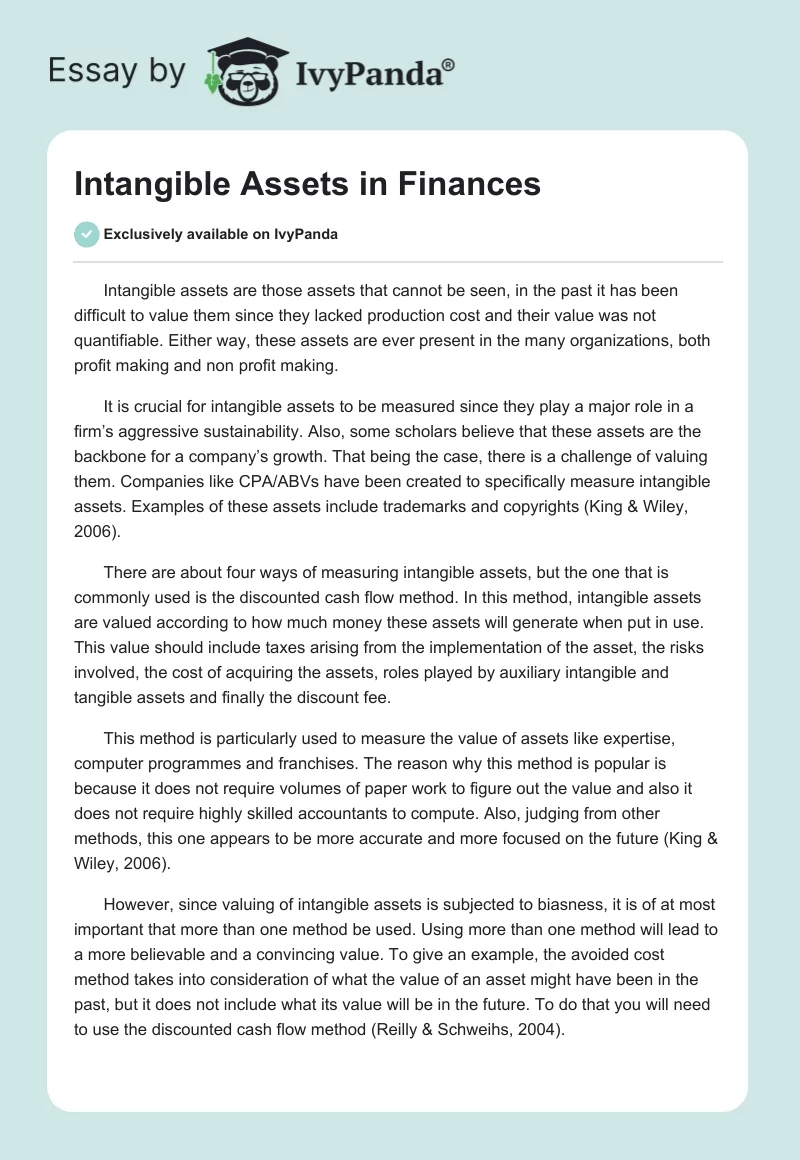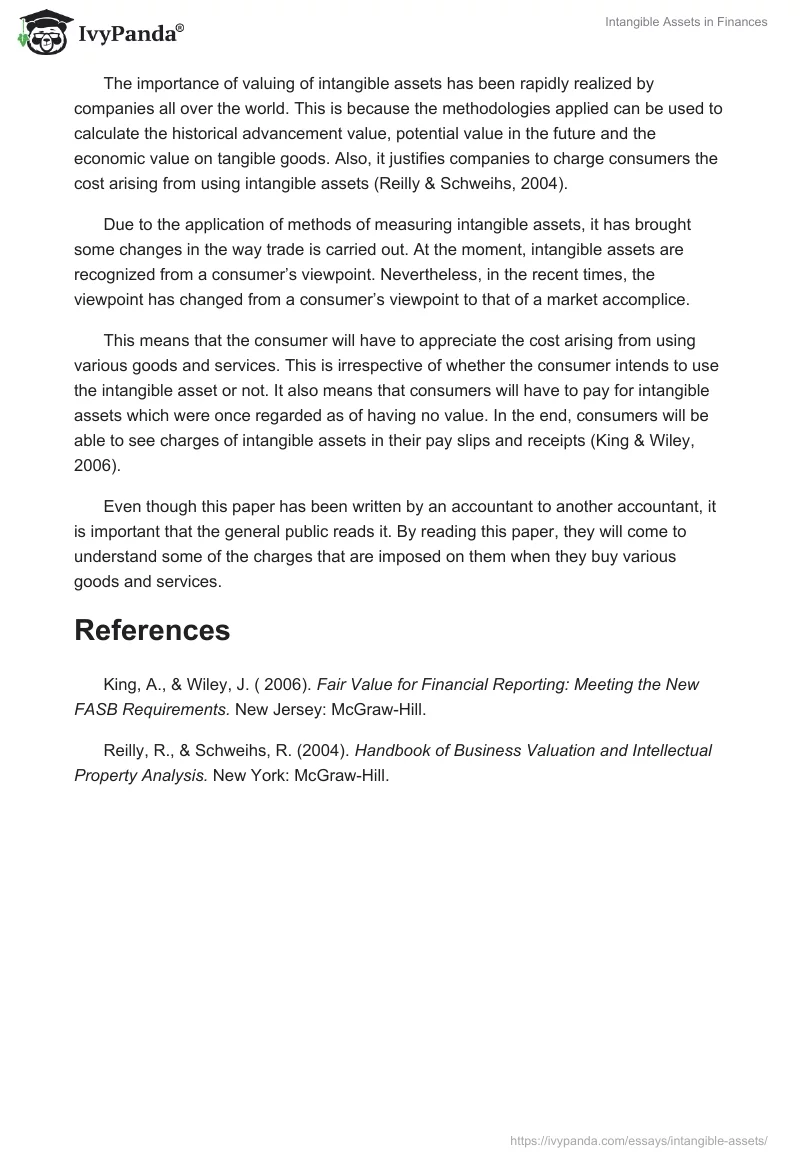Intangible assets are those assets that cannot be seen, in the past it has been difficult to value them since they lacked production cost and their value was not quantifiable. Either way, these assets are ever present in the many organizations, both profit making and non profit making.
It is crucial for intangible assets to be measured since they play a major role in a firm’s aggressive sustainability. Also, some scholars believe that these assets are the backbone for a company’s growth. That being the case, there is a challenge of valuing them. Companies like CPA/ABVs have been created to specifically measure intangible assets. Examples of these assets include trademarks and copyrights (King & Wiley, 2006).
There are about four ways of measuring intangible assets, but the one that is commonly used is the discounted cash flow method. In this method, intangible assets are valued according to how much money these assets will generate when put in use. This value should include taxes arising from the implementation of the asset, the risks involved, the cost of acquiring the assets, roles played by auxiliary intangible and tangible assets and finally the discount fee.
This method is particularly used to measure the value of assets like expertise, computer programmes and franchises. The reason why this method is popular is because it does not require volumes of paper work to figure out the value and also it does not require highly skilled accountants to compute. Also, judging from other methods, this one appears to be more accurate and more focused on the future (King & Wiley, 2006).
However, since valuing of intangible assets is subjected to biasness, it is of at most important that more than one method be used. Using more than one method will lead to a more believable and a convincing value. To give an example, the avoided cost method takes into consideration of what the value of an asset might have been in the past, but it does not include what its value will be in the future. To do that you will need to use the discounted cash flow method (Reilly & Schweihs, 2004).
The importance of valuing of intangible assets has been rapidly realized by companies all over the world. This is because the methodologies applied can be used to calculate the historical advancement value, potential value in the future and the economic value on tangible goods. Also, it justifies companies to charge consumers the cost arising from using intangible assets (Reilly & Schweihs, 2004).
Due to the application of methods of measuring intangible assets, it has brought some changes in the way trade is carried out. At the moment, intangible assets are recognized from a consumer’s viewpoint. Nevertheless, in the recent times, the viewpoint has changed from a consumer’s viewpoint to that of a market accomplice.
This means that the consumer will have to appreciate the cost arising from using various goods and services. This is irrespective of whether the consumer intends to use the intangible asset or not. It also means that consumers will have to pay for intangible assets which were once regarded as of having no value. In the end, consumers will be able to see charges of intangible assets in their pay slips and receipts (King & Wiley, 2006).
Even though this paper has been written by an accountant to another accountant, it is important that the general public reads it. By reading this paper, they will come to understand some of the charges that are imposed on them when they buy various goods and services.
References
King, A., & Wiley, J. ( 2006). Fair Value for Financial Reporting: Meeting the New FASB Requirements. New Jersey: McGraw-Hill.
Reilly, R., & Schweihs, R. (2004). Handbook of Business Valuation and Intellectual Property Analysis. New York: McGraw-Hill.


